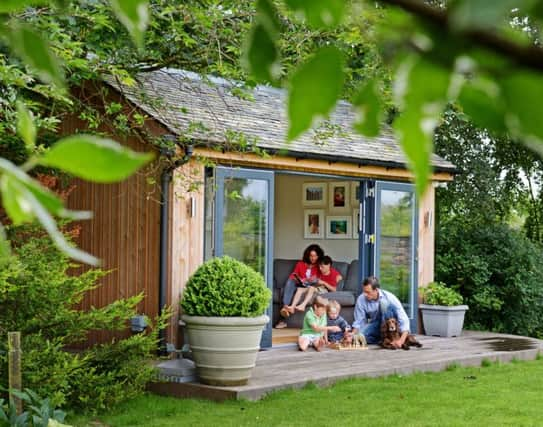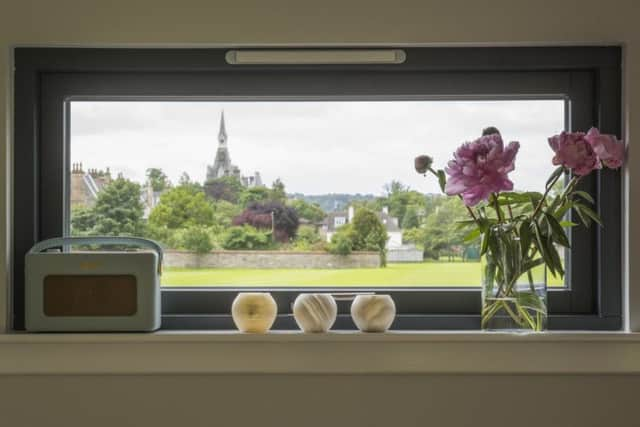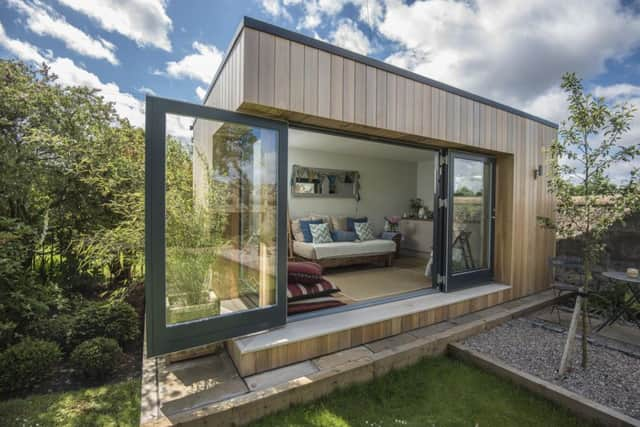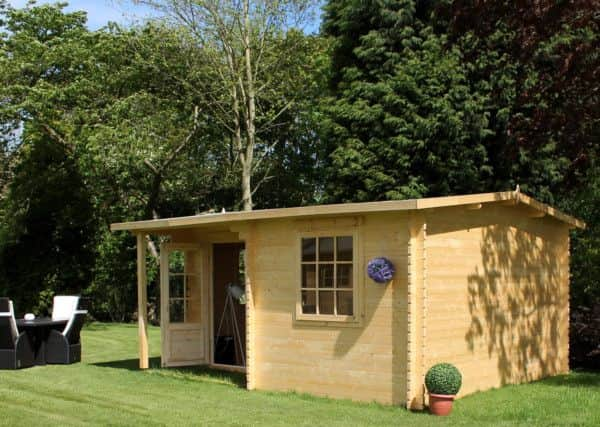Garden rooms are the ultimate in home improvement


If it sounds idyllic, particularly to those who find an agonisingly slow crawl through traffic bookends every working day, you aren’t alone.
As technology allows more of us to choose to work from home, the popularity of a designated home office building in the garden has risen hugely.
Advertisement
Hide AdAdvertisement
Hide AdFrom the shed only habitable in the warmer months, to beautiful bespoke pods with a higher build quality than most houses, there is a wide range of choice.


Nor are garden rooms just a way of adding space. Some of the most impressive examples, according to home search agent, Maggie Dickinson, are in the gardens of very substantial houses. “They are very much sought-after and seen as a real addition, however many rooms there are in the main house.
“They definitely add value and saleability no matter what the square footage – I think of it as ‘what do you add to the house that has everything?’.
“A home office or garden room will make the whole property more attractive to potential buyers.
“With the rise in costs of moving, people are opting to spend money on staying put and adding to their own house rather than handing over thousands in transaction tax, and a good quality garden room is a way to improve your lifestyle and add value.”


A dedicated office space in the garden not only helps separate work from home but also allows householders to create a room specifically for the task in hand with considerations such as light, heating, power and technology designed in.
John Langley of JML Garden Rooms in Auchterarder, Perthshire, says that while many of his commissions are designed to be used as an office workspace, there are different work situations which can be addressed by a stand-alone room in the garden.
“We have built a room in a psychologist’s garden laid out as a consulting room in which she could see patients.
Advertisement
Hide AdAdvertisement
Hide Ad“Although she was working from home it meant that patients didn’t have to come in and out of her house, she could offer them privacy, discretion and peace and quiet.”


He says those customers who work as artists want certain specifications – for instance for light and orientation – in garden rooms to be used as studios, while others run businesses from their gardens.
“One customer is a curtain maker and embroiderer, and needed the space away from the family to lay out her materials and not have them disturbed.”
Another customer worked in stained glass, and her requirements for welding tools was the only time Langley has had to make special arrangements to provide extra power to the garden room.
He says: “Usually it is very straightforward, certainly if you only require power sockets, wi-fi and maybe a TV signal, all can be achieved very easily.”


Unlike an extension, the addition of a garden room – provided it isn’t huge – doesn’t require planning permission either.
At the lower end of the market you can buy flat packed buildings from homes and gardens retailers and construct them yourself.
Purchase prices start at around £2,500 but you would need considerable DIY skills to construct them securely.
Advertisement
Hide AdAdvertisement
Hide AdAt the other end of the scale, JML specialises in garden rooms built to passive house standards. Triple glazed and clad in Siberian larch, with oak floors, the rooms are things of beauty.
They require hardly any heating as they are constructed using super-insulated engineered panels which are put together onsite.
Langley says: “They can be heated by a light bulb practically, although we can install underfloor heating if it is required.”


The company offers a small size – at 9 sq m – from around the £20,000 mark, although bespoke options for whatever purpose you require are available.
He says: “Of course, a garden room doesn’t have to be an office. Many customers use one as a gym, an extra room for entertaining – somewhere to watch the rugby for instance – or just a guest suite away from the house.”
“The difference between ours and the standard garden rooms are the use that you will get out of them.
“Most can’t really be used from October through to April because they are too cold. Ours are for year-round use and will often be much warmer than the main house.
“We use the same technology in our factory that we use to construct passive houses and so our garden rooms are built to last – for at least 60 years. They are a lot more than a glorified shed.”
Advertisement
Hide AdAdvertisement
Hide AdIn terms of design those with a traditional house can enhance the look of their garden even if they go for something strikingly modern in the new building.
Dickinson says: “If you are wanting to add value then commissioning a garden room has to be well thought out and well planned.
“Getting the position right is important, you want it to be away from the house but not in a dark shaded part of the garden.
“Think about how its purpose may change – from a work room to somewhere that you hold barbecues once you retire for example.”
She says that no matter how large and impressive the main house, there is something uniquely attractive about a small building at the bottom of the garden.
“I have had downsizing clients selling a home with a garden room who say it is the thing they will miss most, and they have stipulations about the new property having a garden big enough to install another one as soon as they move, even if it is a ground floor flat.”
“It seems that once you have that extra space, whatever you use it for, it becomes a luxury that you can’t do without.”